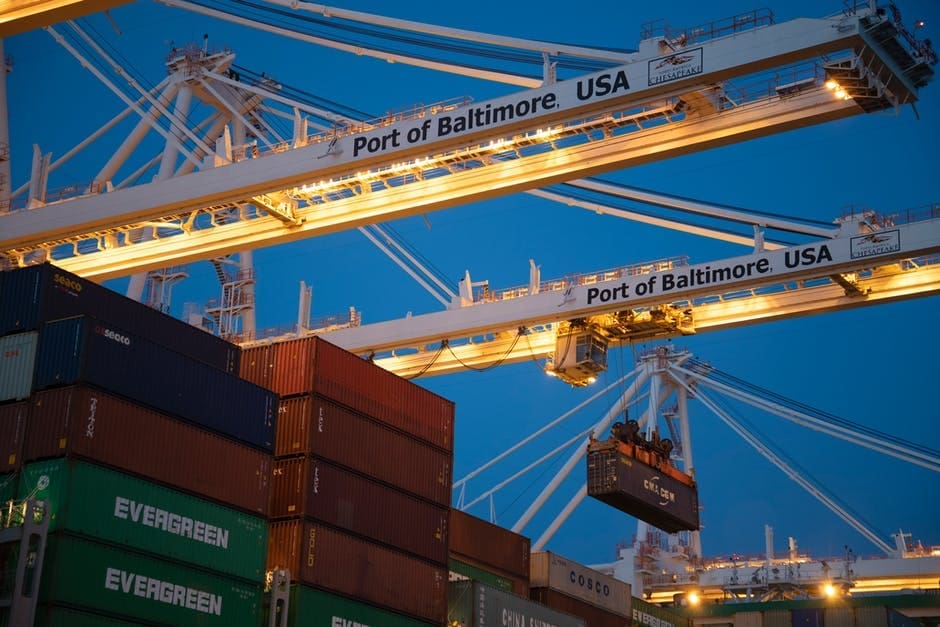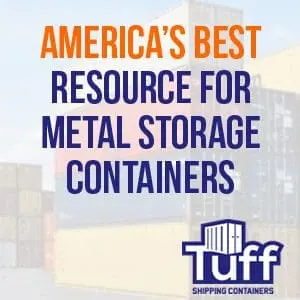
Navigating Logistics and Regulations for Shipping Container Usage
Shipping containers have become increasingly popular due to their versatility, durability, and convenience. However, using them for storage, transportation, or as a construction element involves navigating a complex web of logistics and regulatory considerations. This blog aims to provide a comprehensive guide to these aspects, helping businesses and individuals make informed decisions when using shipping containers.
Understanding the Logistics of Shipping Container Usage
Transporting a shipping container is not a straightforward task. The process involves multiple modes of transportation and various handling equipment. When moved by truck, considerations such as the vehicle’s load capacity, the container’s size, and the route to the destination become crucial. Rail and ship transport have their own sets of requirements, including container securing and stacking protocols. Additionally, the final delivery site needs to be prepped for the container’s arrival, factoring in space for the delivery vehicle and equipment like cranes or forklifts for placement.
Versatile Uses of Shipping Containers and Their Impact on Preparation
Shipping containers, known for their durability and adaptability, are being repurposed for a multitude of uses, each bringing its own set of preparation requirements. Understanding these diverse applications and their specific preparatory needs is crucial for the successful implementation of a shipping container project.
Common Uses of Shipping Containers
- Storage Solutions: One of the most traditional uses of shipping containers is for storage. They provide secure, weatherproof options for storing equipment, inventory, or personal belongings.
- Modular Offices and Workspaces: Shipping containers are increasingly being transformed into offices and workspaces, particularly in construction sites or areas where temporary or portable offices are beneficial.
- Retail Outlets and Pop-Up Shops: The trend of using shipping containers for retail spaces, including pop-up shops and cafes, has gained popularity due to their mobility and ease of customization.
- Residential Living Spaces: A growing interest in sustainable and unique living spaces has led to the use of shipping containers as homes or part of larger residential structures.
- Emergency and Disaster Relief Housing: Their robustness makes shipping containers ideal for emergency housing in disaster-struck areas, providing quick, secure, and temporary accommodation.
- Art Studios and Creative Spaces: Artists and creators often seek unconventional spaces for their work, making shipping containers an attractive option due to their versatility and industrial aesthetic.
- Community and Recreational Facilities: From community centers to sports facilities, shipping containers are being repurposed to create communal spaces that are both functional and aesthetically pleasing.

Preparation Based on Usage
Each of these uses requires specific preparations, influenced by the container’s intended function.
- For Storage: The primary preparation involves ensuring a level and stable foundation, along with considering the need for shelving or organizational systems inside the container. Ventilation might also be necessary to prevent condensation, especially for long-term storage of sensitive items.
- For Offices or Living Spaces: These applications require more extensive preparation. Modifications might include insulation, electrical wiring, plumbing, HVAC systems, and interior finishing. Adherence to building codes and living standards is essential in these cases.
- For Retail or Commercial Use: Alongside the basic structural modifications, aesthetic considerations become crucial. This includes external paintwork, signage, and the installation of large opening windows or doors for customer interaction.
- For Emergency Housing: Speed of deployment is key. Preparations often involve ensuring easy transportability and quick setup, with basic amenities like beds, toilets, and cooking facilities.
- For Creative Spaces: Depending on the artistic needs, these containers may require large open spaces, specialized lighting, and soundproofing.
- For Community Use: Preparations could include making the containers accessible, safe, and comfortable for public use, with considerations for communal activities and gatherings.
The diverse uses of shipping containers are a testament to their versatility and functionality. However, each use case demands specific preparations to ensure the container serves its intended purpose effectively and safely. Understanding these unique requirements is key to the successful adaptation of shipping containers for various needs. Whether for storage, living, commercial, or community use, appropriate preparation and modification are essential to unlocking the full potential of these dynamic structures.
The Importance of Site Preparation
Site preparation is a critical pre-delivery step. For storage purposes, the ground must be level and stable to support the container’s weight. This might involve constructing a concrete foundation or a gravel bed. The level of preparation depends on the container’s intended use and duration of placement. For construction projects, the preparation is more intensive, often involving compliance with local building codes and ensuring utility connections.
Transportation and Delivery
When it comes to moving shipping containers, the logistics can vary based on size, weight, and destination.
- Transportation Modes: Containers can be transported via truck, rail, or ship. Each mode has its own set of requirements and limitations.
- Delivery Access: Ensure the delivery site is accessible for the chosen mode of transportation. For truck deliveries, consider factors like road access, overhead obstructions, and turning radius.
Site Preparation
Prior to the arrival of a shipping container, preparing the site is crucial.
- Foundation and Leveling: For storage or construction purposes, a level foundation is vital to prevent structural issues. Options range from concrete pads to gravel beds, depending on the intended use.
- Space Considerations: Adequate space must be allocated not just for the container, but also for delivery and potential removal. This includes considering any necessary clearance for cranes or forklifts used in the container’s placement.


Regulatory Compliance and Zoning Laws
Zoning laws can be the most unpredictable factor in container usage. These laws vary widely between jurisdictions and can dictate where a container can be placed, for how long, and for what purpose. In some areas, containers are easily approved for storage or construction, while in others, they are restricted, especially in residential zones. Obtaining the right permits is a step that cannot be overlooked. This process involves submitting plans, paying fees, and sometimes navigating community opposition.
Building Codes and Construction Standards
When containers are repurposed for building structures, adherence to local building codes becomes paramount. These codes cover a wide range of construction aspects, including structural integrity, fire safety, electrical wiring, and plumbing. Modifications to containers for habitation or commercial use must be done under the guidance of a qualified engineer or architect to ensure compliance and safety.
Zoning Laws and Permits
Zoning laws can significantly impact the use of shipping containers.
- Residential vs. Commercial: Zoning regulations vary widely between residential and commercial areas. In residential zones, using shipping containers as storage units or buildings might face more stringent restrictions.
- Permit Requirements: Depending on the location and intended use, a permit may be required to place a shipping container on your property. It’s important to check with local planning offices for specific requirements.
Obtaining Proper Permits for Shipping Container Usage
Navigating the permit process is a critical step in utilizing shipping containers, whether for storage, construction, or other innovative uses. This phase, often viewed as a hurdle by many, is integral to ensuring your project aligns with local regulations and avoids legal complications. Here we delve into the nuances of obtaining the necessary permits and underscore the importance of this process in the overall timeline of your project.
Understanding the Permitting Landscape
The journey to securing permits begins with a thorough understanding of local regulations. Each municipality or county has its own set of rules governing the use of shipping containers. The first step is to conduct detailed research into these regulations, which can typically be found on local government websites or by visiting planning and zoning offices. This initial research lays the groundwork for what to expect in the permitting process and the specific requirements for your project.
Preparing for Application Submission
Preparation is key in the permit application process. This involves gathering all necessary documentation, which may include detailed project plans, land ownership records, and engineering certifications, especially if the container will undergo significant modifications. The completeness and accuracy of this documentation play a crucial role in the smooth processing of your application.
The Application and Review Phase
With your documentation in hand, the next step is to submit your permit application to the appropriate authorities. This submission is often accompanied by a fee, the amount of which can vary based on your project’s complexity and location. Following submission, there is a period of waiting while your application undergoes review. This timeframe can be quite variable, ranging from a few weeks to several months, depending on the specific processes of the local permitting office.
The Impact of Permit Delays on Your Project
The importance of timely permit acquisition cannot be overstated. Delays in securing permits can lead to significant project holdups. Without the legal go-ahead, starting any work on your project can result in enforced work stoppages, potential legal ramifications, and the necessity of redoing non-compliant work, all of which contribute to escalated project costs and extended timelines. Moreover, operating without the necessary permits can lead to compliance issues, affecting insurance and liability and potentially leading to hefty fines or legal challenges.
Streamlining Your Permitting Experience
To ensure a smoother permitting experience, it is advisable to start the process early, factoring in potential delays and bureaucratic challenges. Engaging with professionals who have expertise in local regulations can be immensely beneficial. They can help navigate the complexities of the permit process, ensuring that your documentation is thorough and your approach aligns with local requirements. Keeping abreast of your application’s status through regular follow-ups can also be advantageous, helping to address any issues promptly and potentially speeding up the process. Being prepared to make plan modifications in response to feedback from the permitting authority can also aid in expediting the approval process.


Building Codes and Standards
When using shipping containers for construction, compliance with local building codes is essential.
- Structural Modifications: Any modifications to a container for habitation or commercial use must comply with building codes. This includes aspects like insulation, electrical wiring, and plumbing.
- Safety Standards: Adhering to safety standards, especially in modifications, is not just a legal requirement but a necessity for the safety of occupants and the public.
Considerations for International Transportation
If you’re using shipping containers for international transportation, several additional factors come into play. Using shipping containers for international transport adds another layer of complexity. This includes understanding and adhering to customs and import regulations of different countries, which govern what can be shipped and how. These regulations often involve detailed documentation, adherence to trade agreements, and payment of duties and taxes. Shipping lines, each with their unique set of rules regarding container condition, packing standards, and weight limits, further complicate this process.
- Customs and Import Regulations: Be aware of customs laws and import regulations of the destination country. This includes potential duties, taxes, and restrictions on certain goods.
- Shipping Line Regulations: Different shipping lines may have their own set of rules regarding container condition, packing, and weight limits.
Insurance and Liability
Insurance is a crucial aspect often overlooked in the excitement of a shipping container project. If used for storage, the container, as well as its contents, need to be insured against theft, damage, and natural disasters. When containers are used in construction, liability insurance becomes critical to protect against potential accidents or damage claims. The insurance aspect extends to the transportation phase too, covering potential losses or damages during transit.
- Coverage for Contents: If using containers for storage, ensure your insurance policy covers the contents against risks like theft, damage, or natural disasters.
- Liability Insurance: When using containers for business purposes, liability insurance can protect against potential legal claims arising from the container’s use.



Environmental and Community Considerations
The use of shipping containers must also be evaluated from an environmental and community perspective. Sustainability considerations include the impact of modifications on local ecosystems and the overall carbon footprint of the project. Community relations are equally important, especially when containers are used in residential or sensitive areas. Understanding and mitigating any negative impacts on the local community and environment are key to the successful and responsible use of shipping containers.
- Environmental Impact: Especially in construction, consider the environmental implications of your project. This might include the sustainability of modifications or the impact on local ecosystems.
- Community Relations: Be mindful of how the container’s placement and use affect your neighbors or the local community. Maintaining good relationships can prevent disputes and legal issues.
Utilizing shipping containers effectively requires a comprehensive understanding of logistical, regulatory, and legal considerations. Whether for storage, transportation, or construction, careful planning and compliance with relevant laws and standards are imperative. By staying informed and prepared, users of shipping containers can leverage their benefits while minimizing potential complications.

Leave a Reply